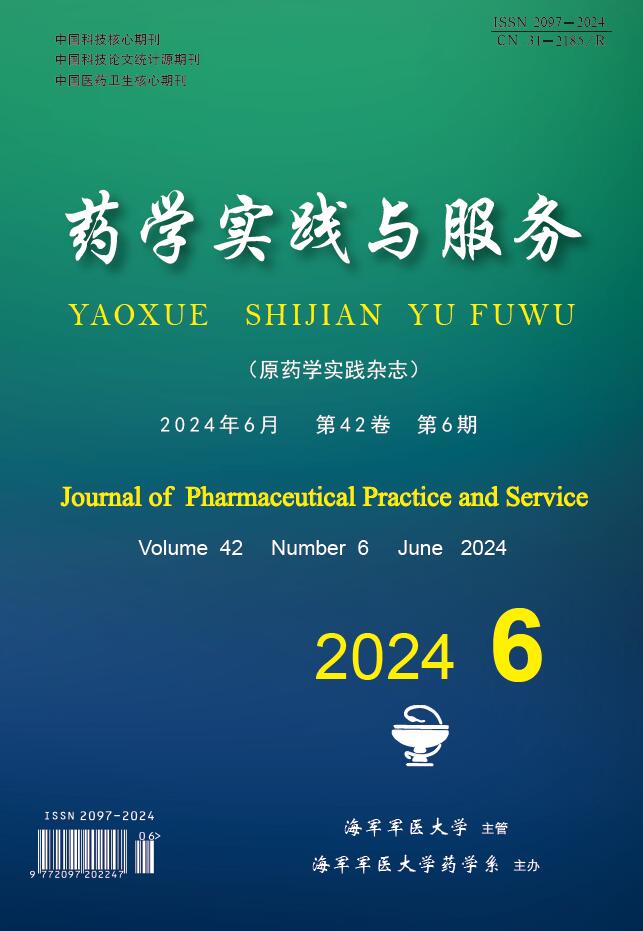-
食管癌是一种消化道恶性肿瘤,在全球发病率很高且患病人数在逐年上升。2020年全球新发确诊食管癌病例60.4万,因食管癌死亡人数约54.4万,发病率和病死率分别位居全球恶性肿瘤第7位和第6位[1]。我国是全球食管癌发病人数和死亡人数最多的国家,食管癌俨然已成为严重威胁我国国民健康的主要恶性肿瘤之一。在过去的几十年里,食管癌的治疗模式主要是手术切除结合放化疗,但该疗法效果并不理想,预后差,病死率高。近些年,分子靶向治疗和免疫治疗应运而生,打破了食管癌的治疗瓶颈,在食管癌的治疗中发挥重要作用,正逐步成为食管癌的一线治疗方案。本研究综述目前主要的食管癌治疗靶点及其相关靶向药物的研究进展。
-
目前,食管癌治疗策略包括手术切除、放化疗、分子靶向治疗及其组合治疗。由于食管癌致病因素复杂,大部分患者确诊时已是中晚期,无法及时采取根治性手术切除,而传统放化疗在消灭肿瘤细胞的同时对体内正常细胞的损伤较严重,产生的毒副作用较大。分子靶向治疗的出现打破了食管癌传统治疗模式的诸多限制,为患者提供了更多的选择性。分子靶向治疗是一种在细胞分子水平上使用靶向特定分子的药物来阻断癌细胞生长和扩散的治疗方式,因为药物针对已经明确的致癌位点,进入体内特异性结合靶点发挥作用,所以也被称作“生物导弹”。理想的靶点对于癌症分子靶向治疗的成功至关重要。通常来说,能够区分癌症细胞和正常细胞的基因,可作为分子靶向药物开发的靶点。近年来,可用于食管癌分子靶向治疗的靶点主要包括表皮生长因子受体(EGFR)、血管内皮生长因子(VEGF)及其受体(VEGFR)、人表皮生长因子受体2(HER-2)、细胞紧密连接蛋白CLAN18、哺乳动物雷帕霉素(mTOR) 、酪氨酸激酶受体(MET)以及凋亡抑制蛋白(XIAP)等。
-
EGFR是ErbB受体酪氨酸家族的成员之一,由胞外结构域、跨膜结构域和胞内结构域3个部分组成,其中胞外结构域又包含Ⅰ、Ⅱ、Ⅲ、Ⅳ 4个亚域。EGFR属于酪氨酸激酶受体,能引起下游酪氨酸激酶活化。大量研究表明,EGFR的异常表达会加速肿瘤进展[2]。食管鳞状细胞癌(ESCC)中EGFR高表达的频率较高,约为60%~70%,并且是患者不良预后的独立危险因素[3]。因此,以EGFR为靶点的药物可能会对食管癌的临床治疗产生积极的影响。
西妥昔单抗(cetuximab)是对EGFR具有高亲和力的人鼠嵌合型IgG1单克隆抗体,它主要通过与EGFR的结构域Ⅲ相互作用,竞争性阻碍内源性表皮生长因子和其他配体与EGFR结合,阻断细胞内信号传导通路,抑制肿瘤进展。Ruhstaller等[4]在一项临床试验中比较了可切除食管癌患者术前辅助治疗和术后辅助治疗中西妥昔单抗加入与否对疗效以及预后的影响,结果发现西妥昔单抗可显著改善病灶的局部区域控制,且没有增加不良事件的发生率。根据Huang等[5]的报道,在多模式治疗中,加入西妥昔单抗可显著提高转移性食管癌患者的缓解率和疾病控制率 (DCR)。Suntharalingam 等[6]在一项临床试验中评估西妥昔单抗联合同步放化疗对食管癌非手术治疗患者的益处,结果发现西妥昔单抗的使用并未改善患者的总生存期(OS)。这些研究表明,西妥昔单抗是一种安全的治疗选择,但仅针对特定食管癌患者群体获益。尼妥珠单抗(nimotuzumab )是一种抗EGFR的人源化单克隆抗体,其作用机制与西妥昔单抗相似。Lu等[7]研究发现,在标准紫杉醇和顺铂治疗局部晚期不可切除ESCC中添加尼妥珠单抗是安全有效的,患者的客观缓解率(ORR)和OS显著改善,无毒性积累且耐受性良好。
吉非替尼(gefitinib)与厄洛替尼(erlotinib)都是EGFR酪氨酸激酶抑制剂,均属于小分子化学药物,都是通过抑制酪氨酸激酶自身磷酸化阻止EGFR激活来发挥抗肿瘤作用。Dutton等[8]研究发现,与安慰剂相比,吉非替尼作为食管癌的二线治疗药物并不能改善患者的OS,但对一些预期寿命较短难以手术治疗患者的姑息治疗有益。此外,研究发现扩大淋巴结照射联合厄洛替尼能够显著降低无法手术ESCC的局部复发,同时进行放化疗可改善局部晚期ESCC的长期生存率[9]。因此,吉非替尼、厄洛替尼联合放化疗对食管癌患者有一定疗效,值得进一步验证。
-
VEGF是一种重要的细胞因子,在调节血管生成方面发挥关键作用。人体VEGF家族共包括8个成员:VEGF-A、VEGF-B、VEGF-C、VEGF-D、VEGF-E、VEGF-F、胎盘生长因子(PLGF)以及内分泌腺源性血管内皮生长因子(EG-VEGF)。VEGFR有3种类型,包括VEGFR-1、VEGFR-2和VEGFR-3。VEGF与VEGFR的相互作用可触发一系列级联反应,导致血管的通透性发生变化,促进细胞增殖、迁移与存活。研究发现VEGF的表达与食管癌患者的进展和预后密切相关,因此靶向VEGF和VEGFR的药物有可能改善食管癌患者的疾病状况[10]。
雷莫芦单抗(ramucirumab)是针对VEGFR-2的全人源IgG1单克隆抗体,可阻断VEGF-A、VEGF-C、VEGF-D与VEGFR-2的结合。REGARD研究评估雷莫芦单抗单药治疗既往经一线含铂或含氟嘧啶化疗的晚期胃食管结合部癌的疗效,结果显示接受雷莫芦单抗治疗患者的OS显著高于安慰剂组[11]。RAINBOW临床试验研究雷莫芦单抗加紫杉醇对比安慰剂加紫杉醇治疗晚期食管腺癌或胃食管结合部癌的疗效,结果显示雷莫芦单抗的加入显著提高了患者的OS[12-13]。综上所述,多项研究支持使用雷莫芦单抗或使用雷莫芦单抗联合紫杉醇作为晚期胃食管结合部癌的二线治疗方案。
阿帕替尼(apatinib)是我国自主研发的新型酪氨酸激酶抑制剂,具有高度选择性,可与VEGFR-2相互作用。Li等[14]研究阿帕替尼单药治疗不可切除的转移性食管癌患者或化疗难治性食管癌患者的有效性及安全性,结果显示使用阿帕替尼作为食管癌的二线治疗有效,且与治疗有关的不良反应均在可接受范围内。该研究表明,如果能控制好原发性肿瘤进展,不严重侵犯气管、支气管或危及主要血管时,使用阿帕替尼有希望成为化疗难治性ESCC患者安全有效的二线治疗或部分患者更高级别的治疗方法[14-15]。
-
HER-2属于ErbB家族的成员,是一种定位于细胞膜表面的酪氨酸激酶,参与细胞生长和分化,是促进肿瘤发展的重要信号传导分子。HER-2高表达的频率在不同类型的肿瘤中有所不同,但普遍与不良预后相关[16]。
曲妥珠单抗(trastuzumab)是一种针对 HER-2 的人源化单克隆抗体。 TOGA实验评估了曲妥珠单抗联合化疗与单纯化疗治疗HER-2阳性晚期胃食管结合部癌患者的疗效与安全性。结果显示,曲妥珠单抗联合化疗能显著延长患者的中位OS,两组不良事件发生率相似[17]。此外,Doi等[18]研究发现,曲妥珠单抗单药在HER-2低表达的晚期胃食管结合部癌的治疗中也可以改善和控制大多数患者的疾病发展。Makiyama等[19]研究发现,曲妥珠单抗联合紫杉醇对一线化疗后无效的HER-2阳性晚期胃食管结合部癌患者无益。虽然曲妥珠单抗已获批为治疗HER-2阳性食管腺癌患者的一线治疗药物,但与其他疗法的联合治疗仍需要临床试验进一步研究。
拉帕替尼( lapatinib )是一种口服的,可同时阻断EGFR与HER-2的双酪氨酸激酶抑制剂。研究发现,拉帕替尼与紫杉醇联合使用具有高度协同作用,可显著降低ESCC细胞中EGFR和HER-2的磷酸化,阻断下游信号分子AKT和MAPKs的激活,降低ESCC细胞的侵袭和迁移能力[20]。LOGiC临床研究发现,在XELOX化疗方案(卡培他滨+奥沙利铂)的基础上添加拉帕替尼并不能延长HER-2阳性晚期胃食管腺癌患者的OS,但亚组分析发现,在亚洲人群和一些年轻患者的治疗中添加拉帕替尼,OS有一定的获益,提示未来可针对这方面的相关性作进一步深入研究[21]。
-
claudin蛋白是一种正常的上皮紧密连接蛋白,是参与细胞间黏附、维持细胞极性的重要物质。claudin18.2属于CLDN18的一个亚型,在正常的胃黏膜上皮紧密连接的细胞中低表达,但在多种肿瘤细胞中显著上调,且提示与不良预后相关[22]。
佐妥昔单抗(zolbetuximab)是首个针对Claudin 18.2的嵌合型单克隆抗体。临床前研究结果表明,佐妥昔单抗具有良好的安全性和有效性[23]。MONO研究证明佐妥昔单抗单药治疗对Claudin18.2阳性晚期胃食管结合部腺癌患者具有良好的耐受性和活性[24]。FAST系列研究发现,与单独使用化疗方案EOX(表阿霉素+奥沙利铂+卡培他滨)相比,在一线EOX治疗中添加佐妥昔单抗可显著延长转移性Claudin18.2阳性胃食管结合部腺癌患者的无进展生存期(PFS)和OS,使患者维持更长时间的良好生活质量[25-26]。因此,佐妥昔单抗与一线化疗药物联合治疗Claudin18.2阳性晚期胃食管腺癌可能是一种不错的选择。
-
MET是一种酪氨酸激酶受体,也是目前唯一已知的肝细胞生长因子(HGF)的受体。研究证实HGF及c-Met在各种类型的癌症中高表达,且普遍与不良预后相关。它们主要通过激活RAS-MAPK及PI3K-AKT信号通路,促进肿瘤细胞的增殖、侵袭和转移。研究发现, MET高表达与食管癌的侵袭转移、临床分期和不良预后密切相关[27]。因此,许多靶向HGF/c-Met途径的药物也在开发应用于食管癌的治疗。
利妥木单抗(rilotumumab)是一种针对HGF的全人源化IgG2单克隆抗体,可选择性靶向和中和HGF,从而阻止下游信号通路的异常激活。一项Ⅱ期临床研究结果显示,利妥木单抗联合表柔比星、顺铂和卡培他滨(ECX)治疗晚期胃食管结合部癌比安慰剂加 ECX 具有更好的活性,但外周水肿、中性粒细胞减少、贫血等不良反应的发生率高于安慰剂组[28]。而RILOMET-1 Ⅲ期临床研究结果显示,与ECX相比,利妥木单抗联合ECX对晚期胃食管结合部癌患者并无益处[29]。因此,利妥木单抗对改善MET 阳性胃食管结合部癌患者的临床研究仍然需要进一步确证。
-
哺乳动物雷帕霉素(mTOR)是一种丝-苏氨酸蛋白激酶,主要通过PI3K/AKT/mTOR途径调控细胞增殖、存活、代谢及蛋白质合成等多种生理功能,该途径的失调与肿瘤的发生和发展密切相关。Chuang等[30]研究发现磷酸化哺乳动物雷帕霉素蛋白(p-mTOR)表达与 ESCC 临床分级相关。体外实验证明,mTOR通路在大多数ESCC中存在异常激活,mTOR和p-mTOR 的高表达被证实是影响ESCC总体生存率的独立不良预后因素[31]。
依维莫司(everolimus)是mTOR的口服蛋白激酶抑制剂,体内外研究证明,作为单药或与顺铂联合使用均对ESCC具有抑制效果,可能是一种有前景的抗ESCC药物[32]。
-
凋亡抑制蛋白(IAP)是一类具有抑制细胞凋亡功能的同源性蛋白家族。X 连锁凋亡抑制蛋白 (XIAP)是IAP家族最具特征、作用最强的成员。XIAP可以通过其BIR、RING结构域直接结合并抑制胱天蛋白酶-3、7、9发挥抗凋亡作用,也可以通过RING结构域自身调节使胱天蛋白酶泛素化阻断凋亡通路[33]。XIAP在多种恶性肿瘤中高表达[34]。Peng等[35]研究发现,XIAP基因多态性(rs8371和rs9856)与ESCC易感性相关,rs8371多态性可作为改善 ESCC 患者临床疗效和预后的指标。Dizdar等[36]也证明XIAP可以作为ESCC的预后标志物。Jin等[37]研究发现,XIAP可能通过激活TGF-β介导的上皮间充质转化来促进ESCC的迁移,同时证明XIAP高表达与ESCC的不良预后显著相关。因此XIAP可能是ESCC治疗的一个新的潜在靶点。
-
除了靶向食管癌细胞的内在信号外,免疫治疗也是食管癌治疗的一个热门研究领域,其主要是通过增强免疫细胞的功能和特异性来抑制癌症进展。通常,抗原呈递细胞,特别是树突状细胞,可以识别和加工肿瘤细胞的表面抗原,并将其呈递给T或B淋巴细胞以产生适应性反应,该适应性免疫反应对于肿瘤细胞的清除发挥着至关重要的作用。然而,肿瘤细胞可以通过多种方式来逃避免疫攻击。比如通过表达免疫检查点蛋白分子抑制T细胞免疫来逃逸T细胞的监视和攻击。近年来,食管癌的免疫治疗得到了飞快的发展,它可以重建免疫细胞的识别和杀伤能力防止肿瘤细胞免疫逃逸,从而使免疫反应正常进行。目前,食管癌的免疫治疗主要涉及程序性细胞死亡受体1(PD-1)、程序性细胞死亡配体1(PD-L1)和细胞毒性T淋巴细胞相关抗原4(CTLA-4)。
-
PD-1是CD28受体家族的成员之一,作为一种共抑制受体在肿瘤特异性T细胞上高度表达。研究发现,PD-1在T细胞上的持续表达会导致T细胞衰竭[38]。PD-1的配体PD-L1在人类的多种癌细胞中表达,通过与T细胞上的PD-1结合逃避自身机体免疫系统的杀伤作用。因此,当阻断T细胞上的PD-1与肿瘤细胞上的PD-L1结合时,机体就可以有效地启动免疫系统发挥抗肿瘤作用。目前,PD-1/PD-L1抑制剂单独治疗食管癌表现出良好的疗效和安全性,常用药物包括帕博利珠单抗(Pembrolizumab)、纳武利尤单抗(Nivolumab)、卡瑞利珠单抗(Camrelizumab)和特瑞普利单抗(Toripalimab)等。
帕博利珠单抗是一种人源化IgG4单克隆抗体,可结合PD-1受体并阻断其与PD-L1和PD-L2的相互作用。他是首个获得 FDA 加速批准靶向PD-1的抑制剂,也是国内首个获批一线治疗食管癌的 PD-1单抗。KEYNOTE-028 IB期临床研究结果首次证实了帕博利珠单抗在治疗晚期食管癌方面的疗效和安全性[39]。KEYNOTE-180临床试验进一步证实了帕博利珠单抗对既往治疗过的晚期食管癌患者具有持久的抗肿瘤活性和可耐受的安全性[40]。Janjigian等[41]在一项临床试验中证明,将帕博利珠单抗添加到曲妥珠单抗并与化疗药物联合用于HER-2阳性晚期胃食管结合部癌和食管癌患者效果极佳,比此前曲妥珠单抗联合化疗方案报道的数据提高了近 70%。
纳武利尤单抗也是针对PD-1受体的全人源IgG4单克隆抗体。CheckMate-577临床试验结果显示,纳武利尤单抗治疗经过手术切除后未达病理完全缓解的食管癌及胃食管结合部癌患者后,患者的无病生存期(DFS)显著延长,超过安慰剂组2倍[42]。CheckMate-648 Ⅲ期临床试验评估了纳武利尤单抗联合化疗(n=321)、纳武利尤单抗联合伊匹木单抗(Ipilimumab,n=325)和单纯化疗(n=324)3种方案治疗晚期ESCC的疗效和安全性,结果显示无论肿瘤PD-L1表达状态如何,纳武利尤单抗联合化疗或伊匹木单抗的一线治疗均比单独化疗显著延长患者的OS[43]。纳武利尤单抗在食管癌辅助治疗及一线免疫治疗适应证方面已在中国获批。
卡瑞利珠单抗是一种国产的具有高亲和性的人源化抗PD-1单克隆抗体,其联合化疗治疗中晚期ESCC在缩瘤降期、诱导病理缓解和安全性方面都表现出色。Yang等[44]的研究显示,卡瑞利珠单抗与白蛋白紫杉醇、卡铂联合治疗II-IIIA期ESCC患者治疗的ORR高达90.5%,DCR达到100%。这种免疫联合化疗的方案已在我国获批用于一线治疗晚期ESCC患者。除此之外,替雷利珠单抗、特瑞普利单抗和信迪利珠单抗都是针对PD-1的单克隆抗体。这些PD-1抑制剂与化疗联合在一线治疗晚期或转移ESCC患者的治疗上展现出突出的优势与安全性,且获益与否不受PD-L1表达水平影响。
-
CTLA-4是CD28 受体家族的第2个成员,仅在T细胞中表达。CTLA-4可竞争性阻断CD28与其配体的结合,传递抑制信号,阻断T细胞活化,造成肿瘤细胞的免疫逃逸。研究发现,CTLA-4的表达水平在食管癌中显著上升[45]。因此,靶向CTLA-4的抑制剂可阻断CTLA-4对T细胞活化的抑制作用,增强特异性抗肿瘤的免疫反应。
伊匹木单抗是一种全人源IgG1单克隆抗体,可阻断 CTLA-4 以增强抗肿瘤免疫反应。一项Ⅱ期临床试验评估了伊匹木单抗单药治疗与最佳支持治疗对一线化疗后达到病情稳定的晚期转移性胃食管结合部癌患者的疗效[46],结果与最佳支持治疗组相比,伊匹木单抗单药治疗患者并没有获益。曲美木单抗(Tremelimumab)是全人源化的IgG2单克隆抗体,一项Ⅱ期临床试验研究了曲美木单抗作为食管腺癌患者二线治疗的可行性,结果显示仅少数患者获益[47]。因此,靶向阻断CTLA-4与抗原相结合用于食管癌的治疗仍需要进一步深入研究。
-
食管癌是一种高度异质性肿瘤,其起源、分子特征和独特的肿瘤微环境均会影响临床治疗效果。目前,根据临床分期,早期食管癌的主要治疗方式仍然是手术根治性切除,中晚期患者术后辅助放疗和化疗,晚期和转移性食管癌的标准治疗方法是化疗,但由于食管癌初诊时大多数患者已失去最佳手术根治性切除机会,而放化疗又存在严重不良反应和耐药性问题。因此,迫切需要进一步优化治疗方案。
分子靶向治疗和免疫治疗的发展正如火如荼,方兴未艾,它们的出现为过去几十年食管癌以手术联合放化疗为主的治疗模式带来了全新的突破。在分子靶向治疗领域,使用抗EGFR或VEGF的抗体或口服TKIs产生了令人鼓舞的结果,目前已有靶向HER-2和VEGFR的药物批准用于治疗转移性食管癌。除此之外,许多研究还显示其他多种分子靶向药物在食管癌的治疗中表现乐观,有望进一步纳入临床一线治疗方案。但是,在将靶向药物用于改善治疗结果时,我们不可忽视其可能带来的弊端,如靶向治疗成本高,容易发生耐药性,联合放化疗比单药治疗不良事件的发生率更高,药物调控的信号通路交叉容易引发其他并发症等。除此之外,如何精准筛选能获益人群也是困扰分子靶向治疗临床应用的难题之一。在免疫治疗领域,该疗法已在不同类型的食管癌中显示出治疗潜力,但个体患者的反应差异很大,只有小部分患者在基于PD-1/PD-L1的治疗中受益。因此,如何精准筛选获益人群是食管癌患者接受免疫疗法亟待解决的问题。肿瘤微环境极其复杂,食管癌的治疗可以考虑将不同的免疫疗法或药物与某些常规治疗方法相结合,这样可以最大限度地提高治疗效果,如免疫治疗与放疗或化疗相结合即是一个值得探索的方向。目前,免疫治疗和分子靶向治疗的联合疗法也已经粗有眉目。当然,针对各类基因靶点及其靶向药物以及新的免疫受体的开发仍然是未来食管癌治疗的关键,也是食管癌实现精准治疗的方向。因此,未来亟需大量的基础和临床研究来解决这些难题,为患者提供最佳的治疗策略。相信随着新的靶点不断发现,未来将会出现越来越多针对食管癌的新型治疗方法,最终实现该病的有效控制和治愈。
Research progress on targeted therapy and immunotherapy for esophageal cancer
doi: 10.12206/j.issn.2097-2024.202306008
- Received Date: 2023-06-02
- Rev Recd Date: 2024-01-17
- Available Online: 2024-06-24
- Publish Date: 2024-06-25
-
Key words:
- esophageal cancer /
- molecular targeted therapy /
- immunotherapy /
- molecular mechanisms
Abstract: Esophageal cancer is a malignant tumor with high incidence and mortality rate in the world and its pathogenic factors are complex and diverse. There are no obvious symptoms in the early stage, and most patients are in the middle to late stage at the initial diagnosis. The prognosis of esophageal cancer is poor. The treatment mode of conventional surgical resection combined with chemoradiotherapy can no longer meet the current treatment needs of disease, and new treatment strategies are urgently needed. Molecular targeted therapy and immunotherapy are new treatment methods that have emerged in recent years, which have broken the therapeutic bottleneck and have been proven to play important roles in the treatment of esophageal cancer. The current research progress of the main targets and their related targeted drugs in molecular targeted therapy and immunotherapy for esophageal cancer were reviewed in this article, which provided reference for the application of precision medicine in the field of esophageal cancer.
| Citation: | MA Zifen, XU Weiheng, JIN Yuxiang, XUE Lei. Research progress on targeted therapy and immunotherapy for esophageal cancer[J]. Journal of Pharmaceutical Practice and Service, 2024, 42(6): 231-237. doi: 10.12206/j.issn.2097-2024.202306008 |







 DownLoad:
DownLoad: